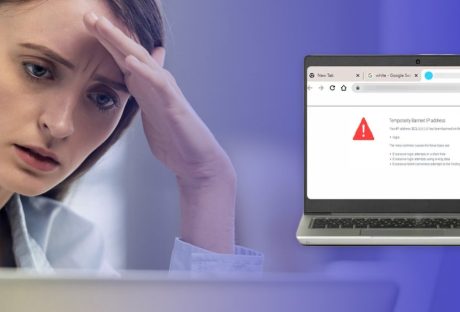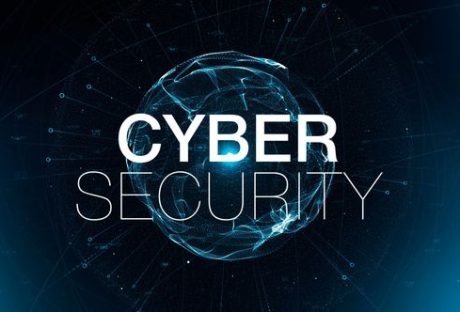A single data breach can expose tens of millions of customers to spam, scams, identity theft, fraud, and more. It’s also a quick, easy way to destroy your brand reputation and lose a massive chunk of your customer base.
In the worst-case scenario, you could end up paying millions of dollars in fines. If serious enough, your team members or executives could even face some jail time.
But customer data still needs to be kept safe and private, even when the risks are far less grand in scale. Simply leaking your customers’ email addresses and exposing them to junk mail can erode their trust in you.
To protect your customers and assuage any customer concerns, always handle their data with care. Here are a few important ways to protect data, limit the risks, and put your customers at ease.
1. Use Zero Party Data

Perhaps the best way to put customers at ease about their data is to give them more control over what you know. Letting them decide what they share with you — and don’t — can protect their privacy and boost your brand reputation.
Giving customers a chance to consent or opt out of sharing first-party data when they visit your site or app is a nice touch. But if you really want to put your customers in the data driver’s seat, zero party data is the way to go.
With zero-party data, your customers and prospects respond to surveys, polls, questionnaires, and more. These inputs can be used to personalize their experience, or anonymized and aggregated to help your brand make data-driven decisions.
Either way, when customers provide this data, they usually expect some kind of user benefit. A personalized product recommendation, useful content, or a customized landing page are all ways to deliver that small reward.
2. Be Transparent
Ideally, you should tell all of your customers exactly what you collect, what you use it for, and why. As long as you’re not up to anything nefarious (you aren’t, right?) transparency should be as simple as a brief pop-up disclaimer.
In fact, transparency could help improve your credibility and customer trust in your brand. And that trust can in turn have a direct impact on your business growth and performance.
It’s particularly important not to collect any extra bits of customer data you don’t need and they haven’t agreed to share. Gathering and storing extraneous data heightens the risk to your customers if there’s a breach. In some countries, regions, or industries, it could even be illegal.
Besides all this, it can take up unnecessary room on servers, cloud storage, etc. To be on the safe side, always get permission from customers before collecting any kind of data.
3. Anonymize and Encrypt

Some of the worst data breaches on record have also turned out to be some of the most ridiculous. Companies have accidentally leaked massive spreadsheets with customer names, addresses, passwords, and credit card data all linked together. But even anonymizing data doesn’t necessarily give customers any real protection or privacy. It’s all too easy to put two-and-two together and figure out someone’s identity.
To ensure that data is truly safe, your company should always use the latest encryption methods and data protection protocols. Consult with experts about the best practices, software programs, and other tools to suit your company’s needs.
Data security is not the place to cut corners, so be willing to dedicate a significant portion of your budget to protecting customers. Otherwise, you risk putting them in danger of identity theft, financial loss, reputational damage, and more.
4. Train Employees and Vet Vendors
Customer data should be kept strictly confidential and only shared with employees and vendors on a need-to-know basis. Your employees need to understand how crucial it is to protect sensitive data and how exactly they need to do it.
Before handling potentially sensitive data, employees should undergo appropriate screenings and training. Train them not to share details like passwords or door codes, and limit access to sensitive cabinets, rooms, or computers.
Third-party vendors and contractors can be a potential cause of concern for data privacy. That’s why it’s important to carefully vet them, just as you would employees. The more you share data, the higher the risk of a breach or exposure along the way. If a vendor has access to your data, and its systems are compromised, your data could be leaked. Or, bad actors at the company you shared with could use the data in unsafe or inappropriate ways.
Worst-Case Scenarios
In the event that a data leak or cybersecurity event does occur, your company should have an emergency plan in place. Know what you’ll do in the event of a breach — how you’ll stop it from progressing and contain the damage.
The plan should clearly indicate roles and responsibilities and include considerations for various scenarios. Many companies, universities, and government agencies have their plans publicly available online, as a resource.
Whatever you do, never attempt to conceal a data breach from the media, your customers, or the public. You could end up facing fines, lawsuits, sanctions, jail time, and irrevocably brand-damaging press. Instead, own up to the breach immediately and let your customers know how you plan to handle it. In order to earn back their trust, you’ll have to prove you know how to do the right thing.
Read Also:






















